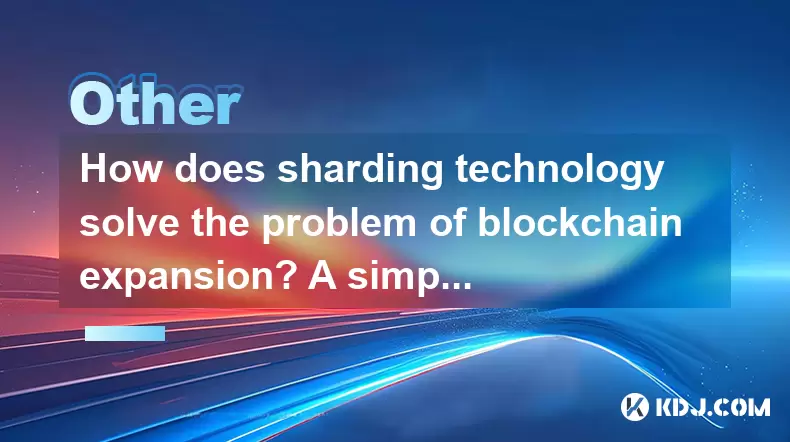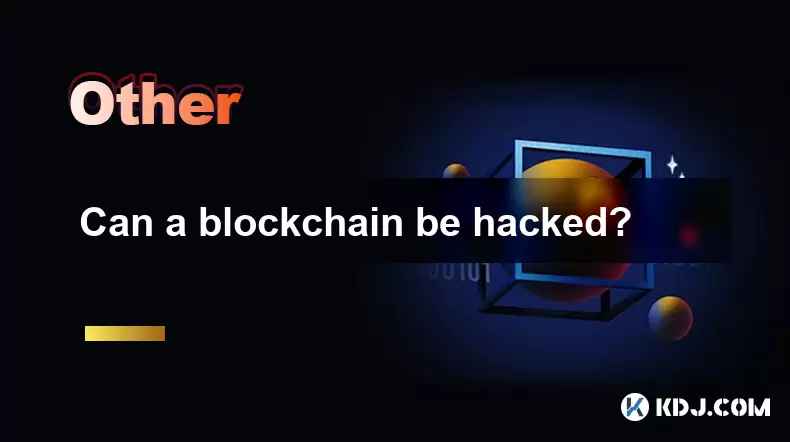-
 Bitcoin
Bitcoin $114500
-0.31% -
 Ethereum
Ethereum $3648
1.11% -
 XRP
XRP $3.033
-0.27% -
 Tether USDt
Tether USDt $0.9999
-0.01% -
 BNB
BNB $758.5
-0.32% -
 Solana
Solana $167.5
1.48% -
 USDC
USDC $0.9998
-0.02% -
 TRON
TRON $0.3331
0.74% -
 Dogecoin
Dogecoin $0.2039
0.25% -
 Cardano
Cardano $0.7419
-0.46% -
 Hyperliquid
Hyperliquid $39.21
2.66% -
 Stellar
Stellar $0.4049
-1.95% -
 Sui
Sui $3.483
-0.56% -
 Bitcoin Cash
Bitcoin Cash $570.8
2.89% -
 Chainlink
Chainlink $16.67
-0.57% -
 Hedera
Hedera $0.2470
-1.57% -
 Ethena USDe
Ethena USDe $1.001
0.00% -
 Avalanche
Avalanche $22.36
1.52% -
 Litecoin
Litecoin $123.4
4.35% -
 UNUS SED LEO
UNUS SED LEO $8.989
0.09% -
 Toncoin
Toncoin $3.324
-2.40% -
 Shiba Inu
Shiba Inu $0.00001219
-1.30% -
 Uniswap
Uniswap $9.811
2.54% -
 Polkadot
Polkadot $3.662
-0.07% -
 Monero
Monero $295.5
-3.85% -
 Dai
Dai $1.000
0.01% -
 Bitget Token
Bitget Token $4.345
0.24% -
 Cronos
Cronos $0.1380
0.95% -
 Pepe
Pepe $0.00001044
-1.14% -
 Ethena
Ethena $0.5981
-4.24%
How does sharding technology solve the problem of blockchain expansion? A simple interpretation
Sharding improves blockchain scalability by dividing the network into smaller partitions, allowing parallel transaction processing and reducing node storage requirements.
Jun 20, 2025 at 07:50 am

Understanding the Scalability Problem in Blockchain
The blockchain scalability problem refers to the limitation of traditional blockchain networks like Bitcoin and Ethereum in processing a large number of transactions per second. Unlike centralized systems such as Visa, which can handle tens of thousands of transactions per second, most public blockchains struggle with just a few dozen. This bottleneck occurs because every node in the network must process and store every transaction, leading to increased latency and higher storage requirements.
In this context, sharding technology emerges as a promising solution. It aims to improve throughput without compromising decentralization or security. The key idea behind sharding is to divide the network into smaller partitions called "shards," each capable of handling its own set of transactions and smart contracts.
What Is Sharding in Blockchain?
Sharding is a database partitioning technique that splits a large database into smaller, more manageable parts. In blockchain, each shard processes a subset of the network's transactions, allowing multiple shards to operate simultaneously. This parallelism significantly increases the network’s capacity to handle transactions.
Each shard has its own set of validators who are responsible for verifying transactions within their shard. These validators do not need to process the entire blockchain; they only focus on their assigned shard. However, maintaining consistency and security across all shards remains a critical challenge.
How Does Sharding Work in Practice?
To implement sharding effectively, several components must be in place:
- Shard Chains: These are individual chains within the larger blockchain network, each responsible for a portion of the transaction load.
- Collation and Cross-Linking: A collator collects transactions from a shard and creates a collation (similar to a block). This collation is then linked to the main chain (often referred to as the beacon chain) to ensure finality.
- Random Validator Assignment: To prevent malicious behavior, validators are randomly assigned to different shards using a verifiable random function (VRF).
These mechanisms ensure that while each validator works on a small part of the network, the system as a whole maintains integrity and consensus.
Benefits of Implementing Sharding
One of the primary advantages of sharding is increased transaction throughput. By dividing the workload among multiple shards, the network can process many transactions simultaneously. This makes blockchain more viable for real-world applications like digital payments, supply chain tracking, and decentralized finance (DeFi).
Another benefit is reduced storage requirements for individual nodes. Since nodes only need to maintain data related to their assigned shard, it becomes easier for regular users to run full nodes, preserving decentralization.
Additionally, network efficiency improves due to reduced congestion. With fewer transactions being processed by each node, confirmation times become faster, and transaction fees may decrease.
Challenges and Risks Associated with Sharding
Despite its potential, sharding introduces several complexities. One major concern is cross-shard communication. If two transactions occur in separate shards and are interdependent, coordinating them becomes complex. Solutions like asynchronous messaging and receipts are being explored to address this issue.
Security is another significant challenge. Smaller shards are more vulnerable to attacks since an adversary could target a single shard with relatively fewer resources. To mitigate this risk, random validator rotation and cryptographic techniques like fraud proofs and data availability checks are employed.
There is also the issue of data availability. Ensuring that all necessary data remains accessible across shards requires robust protocols. Techniques such as erasure coding and Merkle tree verification help guarantee that no shard loses critical information.
Real-World Implementation: Ethereum 2.0 and Sharding
Ethereum 2.0 is one of the most notable projects incorporating sharding. Initially, the plan was to introduce 64 shards, each functioning as a parallel chain. These shards would handle execution and state, reducing the burden on the main Ethereum chain.
However, recent updates have shifted focus toward using shards primarily for data availability, rather than full execution. This approach simplifies implementation and integrates better with layer-2 scaling solutions like rollups.
Validators in Ethereum 2.0 are randomly assigned to shards via the beacon chain, ensuring that no single group controls a shard long enough to manipulate it. Each shard periodically submits a summary of its state to the beacon chain, enabling cross-shard synchronization and consensus.
Frequently Asked Questions
Q1: Can sharding be implemented in any blockchain?
Yes, sharding can theoretically be applied to any blockchain, but it requires significant architectural changes. Public blockchains aiming for high throughput and decentralization benefit the most from sharding.
Q2: How does sharding differ from sidechains or layer-2 solutions?
Sharding operates at the base layer and involves splitting the main chain into multiple parallel chains. Sidechains and layer-2 solutions, like Lightning Network or rollups, function off the main chain and rely on it for security but reduce on-chain congestion.
Q3: What role does the beacon chain play in sharding?
The beacon chain coordinates the network of shards. It manages validator assignments, facilitates cross-shard communication, and ensures overall consensus across the entire system.
Q4: Are there alternatives to sharding for solving blockchain scalability?
Yes, other approaches include increasing block size, adopting alternative consensus mechanisms like Proof-of-Stake, and implementing off-chain solutions such as state channels and rollups. Each method has trade-offs regarding decentralization, security, and complexity.
Disclaimer:info@kdj.com
The information provided is not trading advice. kdj.com does not assume any responsibility for any investments made based on the information provided in this article. Cryptocurrencies are highly volatile and it is highly recommended that you invest with caution after thorough research!
If you believe that the content used on this website infringes your copyright, please contact us immediately (info@kdj.com) and we will delete it promptly.
- Meme Coins Skyrocket: Is Dogecoin About to Be Dethroned?
- 2025-08-06 03:50:13
- Tether's On-Chain Surge: USDT Dominates and Drives Blockchain Fees
- 2025-08-06 02:50:13
- Bitcoin, Treasury, Country: Bolivia Follows El Salvador's Lead, While TON Strategy Co. Makes Waves
- 2025-08-06 03:50:13
- Succinct's PROVE Token & Mainnet Launch: A New Era for ZK Proofs
- 2025-08-06 02:50:13
- CEA Industries Rebrands as BNB Network Company: A New Era for BNB Treasury
- 2025-08-06 03:55:14
- Terra Classic's Market Module Revival: The v3.5.0 Upgrade and What It Means for LUNC
- 2025-08-06 02:30:12
Related knowledge

What is the purpose of a nonce in mining?
Aug 04,2025 at 05:56pm
Understanding the Role of a Nonce in Cryptocurrency MiningIn the world of cryptocurrency mining, the term nonce stands for 'number used only once.' Th...

Can data on a blockchain be deleted?
Aug 05,2025 at 04:00am
Understanding Blockchain ImmutabilityThe core principle behind most blockchain systems is immutability, which means that once data is recorded onto th...

What is the difference between on-chain and off-chain transactions?
Aug 02,2025 at 04:22pm
Understanding On-Chain TransactionsOn-chain transactions refer to digital asset transfers that are recorded directly on a blockchain ledger. These tra...

How are blocks linked together?
Aug 04,2025 at 06:56am
Understanding the Structure of a BlockchainA blockchain is a decentralized digital ledger composed of a sequence of blocks, each containing a list of ...

Can a blockchain be hacked?
Aug 05,2025 at 08:29am
Understanding Blockchain Architecture and Security PrinciplesBlockchain technology is built on a decentralized and distributed ledger system that reco...

What is a node's role in a blockchain network?
Aug 03,2025 at 03:16pm
Understanding the Function of a Node in a Blockchain NetworkA node is a fundamental component of any blockchain network, acting as a participant that ...

What is the purpose of a nonce in mining?
Aug 04,2025 at 05:56pm
Understanding the Role of a Nonce in Cryptocurrency MiningIn the world of cryptocurrency mining, the term nonce stands for 'number used only once.' Th...

Can data on a blockchain be deleted?
Aug 05,2025 at 04:00am
Understanding Blockchain ImmutabilityThe core principle behind most blockchain systems is immutability, which means that once data is recorded onto th...

What is the difference between on-chain and off-chain transactions?
Aug 02,2025 at 04:22pm
Understanding On-Chain TransactionsOn-chain transactions refer to digital asset transfers that are recorded directly on a blockchain ledger. These tra...

How are blocks linked together?
Aug 04,2025 at 06:56am
Understanding the Structure of a BlockchainA blockchain is a decentralized digital ledger composed of a sequence of blocks, each containing a list of ...

Can a blockchain be hacked?
Aug 05,2025 at 08:29am
Understanding Blockchain Architecture and Security PrinciplesBlockchain technology is built on a decentralized and distributed ledger system that reco...

What is a node's role in a blockchain network?
Aug 03,2025 at 03:16pm
Understanding the Function of a Node in a Blockchain NetworkA node is a fundamental component of any blockchain network, acting as a participant that ...
See all articles

























































































